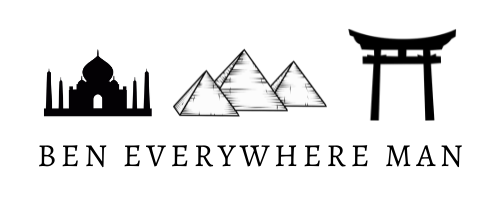The Annapurna Circuit Nepal - things to consider
What is the Annapurna Circuit?
The Annapurna Circuit is a multi day trek that cirlces the Annapurna Massif, a collection of mountains stretching 55km in length and including the tenth tallest mountain in the world, Annapurna 1.
The highest point of the Trek is at Thorong La Pass at an altitude of 5416m/17769 ft which you reach on the 7th or 8th day
Things to consider
There are plenty of resources on the internet that will give you a full run down of advice and tips, what to bring and how to prepare for the Annapurna circuit so i won’t rehash them. Below are a few things to consider if you are either organising your own trek or once you are on the trek.
Consider spending a bit of extra cash at the guesthouses
Accommodation is typically free if you have dinner and breakfast at the guesthouse, you are not required to hire a guide or Sherpa (unlike most other treks in Nepal) and apart from the park permit and bus ride your costs are pretty low for the Annapurna Circuit. You have potentially hired your gear from Kathmandu or Pokhara and bought a few snacks for each day but again this isn’t a big outlay. While i like to travel frugally as much as anyone, consider spreading a bit more of the wealth on this trip. Dinner and breakfast will likely costs you between $10-15 Avg pp for both meals including free accommodation across the trek. Prices increase as you get further up the pass but cheaper at the start and end. If you were to spend an extra $5 - $10 pp at each (25%-50% increase) maybe on snacks, teas, breads and drinks or even just leave a tip for your host it will only increase your overall cost of the trip by $150.00. That extra money might not seem a lot to you but will greatly appreciated by your hosts
Consider ordering the same meals
If you are in a group or even just a couple, considering ordering the same meal when you stop for lunch or dinner. The guesthouses are typically run by a single occupant (usually a lovely old Nepalese women) and having to cook Dahl bhat, momos’, pizza (yes they will make pizza), chow mein and a Yak Burger will not only send your host into a spin and you will likely be waiting a while for even the rarest of Yak Burgers. Try and get your group on the same page and order the same meals, your host will appreciate it and you won’t be waiting long for your grub.
Be mentally prepared for the second half of the trek
Most of your preparation before and during the first part of your trip will be focused around fitness and acclimatising to the altitude. Trek high, sleep low! No more than 500m elevation gain over 3000m per day! You have traveled a long distance just to get to Nepal, and then walked and stressed for 8-9 days prior to the pass over Thorong La Pass worrying if you have prepared correctly and don’t have to turn back due to injury, exhaustion or altitude sickness. But you make it over the pass with no issues, its an amazing experience, one you will never forget. Now for another 7 days a hiking!! For me this was a bit of a mental struggle. I was still holding onto the stresses and worries prior to the pass, and following strict diet rules eg. No alcohol, meats, mountain grass… My advice, enjoy the trek down, take your time. Spend an extra day at the Tatopani hot springs or have a Yak burger at Yak Donald’s in Kagbeni. Its still a long walk home, and a lot of steps down Poon Hill so enjoy it, you have accomplished alot!
i don’t see any recycling trucks!
Be mindful of how waste gets on and off the mountain, especially plastics. I was quite dismayed when reaching one of the early towns to the see the waterways complete engulfed with plastic water bottles and an assortment of other waste. I also witnessed a couple young Nepalese locals littering chip packets on the trail so the blame isnt solely on foreign travelers. However most travelers are unaware that the majority of non bio-degradable waste is left on the mountain and buried in landfill. Even the trash cans that are placed on the trek are not easily managed due to the accessibility and amount of trash during the high seasons. My advice is to bring water filters and tablets to reduce your need for plastic water bottles, leave any prepackaging at home and carry out as much non-bio gradable waste as you can even if you see a trash can. This is one of the most pristine environments in the world, lets keep it that way




